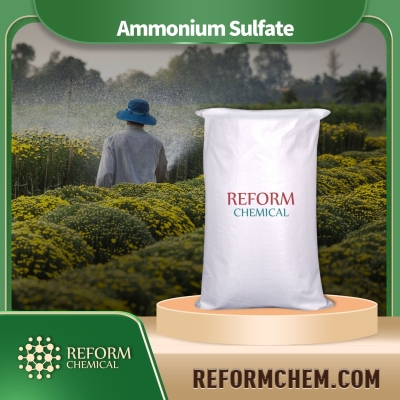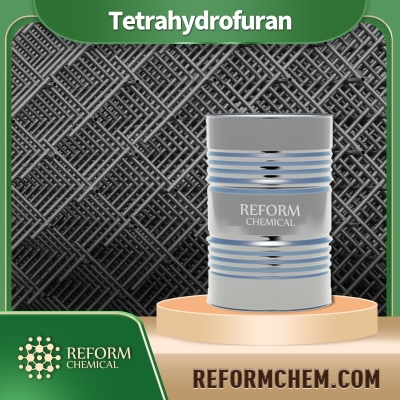-
Categories
-
Pharmaceutical Intermediates
-
Active Pharmaceutical Ingredients
-
Food Additives
- Industrial Coatings
- Agrochemicals
- Dyes and Pigments
- Surfactant
- Flavors and Fragrances
- Chemical Reagents
- Catalyst and Auxiliary
- Natural Products
- Inorganic Chemistry
-
Organic Chemistry
-
Biochemical Engineering
- Analytical Chemistry
-
Cosmetic Ingredient
- Water Treatment Chemical
-
Pharmaceutical Intermediates
Promotion
ECHEMI Mall
Wholesale
Weekly Price
Exhibition
News
-
Trade Service
Throughout the history of pesticide development, with the improvement of environmental protection awareness and the need for sustainable development, the requirements for pesticide formulations are getting higher and higher
.
This article introduces traditional pesticide formulations, summarizes their problems, and focuses on the six major development trends of pesticide formulations in the future
.
1.
The development of pesticides Throughout the history of pesticide development for more than 100 years, it has experienced the first generation of "low-efficiency" natural plant and inorganic pesticide-based pesticides, the second generation of "high efficiency" organic synthetic pesticides and the third generation of "super high efficiency" "Pesticide development stage
.
It can be seen from this that the human requirement for the screening of pesticide active substances is high activity
.
As we all know, the structure of new pesticides in the world is becoming more and more complex, and the screening rate of new pesticides is getting lower and lower
.
In the 1960s, it was possible to screen out one active structure out of 3,000 compounds.
Now it is possible to screen out one active structure out of 30,000 compounds
.
Taking into account that the development cost of pesticide active substances is getting higher and higher, if the active substances can fully play the role of the active substances, achieving the expected control goals with lower dosages is another way to develop high-efficiency pesticides
.
Pesticide formulation research provides the possibility to achieve this goal, and it is being paid attention to by more and more pesticide people
.
Since most of the original pesticides are organic compounds, they have very poor compatibility with water, so it is impossible to produce their proper efficacy if they are directly diluted and sprayed with water without processing
.
Therefore, the original pesticide must undergo certain processing to form a certain form of preparation before it can be applied, and the quality of a formulation directly affects the effect and application of the pesticide
.
In order to meet the requirements of farmers, pesticide formulations must be effective, safe, stable in storage, and convenient to use
.
As the country’s evaluation of pesticide products has shifted from a single evaluation of efficacy to a comprehensive evaluation of various functions, if it is necessary to ensure the quality of pesticides, the safety of agricultural products and the safety of humans and animals; protect agriculture, forestry production, and the ecological environment
.
In this situation, pesticide formulations play a more important role in improving product functions.
.
In order to minimize the impact of medicaments on the environment, it is necessary to conduct in-depth research on the dispersion, conduction, and mechanism of medicaments
.
In today's era, with the birth of ultra-efficient pesticides and people’s attention to environmental protection and the need for sustainable development, higher requirements have been put forward on pesticide formulations, which are mainly summarized as follows: ① Convenient to use form; ② Maximum capacity Effectiveness of the drug can be achieved in a timely manner; ③ it can make up for the shortcomings of the raw material; ④ improve the safety of users; ⑤ reduce the adverse impact on the environment; ⑥ easy to use and achieve labor-saving; ⑦ functionalize and expand the existing pesticide varieties Purpose
.
2.
Formulations of traditional pesticides and existing problems.
Pesticides are in direct contact with the environment when they are applied.
Compared to the human body where the action system of medicine is relatively closed, the action system of pesticides is an open system, and there are many influencing factors in the system, such as Temperature, air pressure, humidity, wind, rain, etc.
will directly affect the effect of pesticide application, that is, there are many factors that need to be considered in order to ensure the efficacy of pesticides in formulation research
.
At the same time, with the country’s in-depth regulation of pesticide management, it is necessary to consider the safety of agricultural products and the friendliness of the ecological environment in the research of pesticide formulations at this stage.
However, since pesticides are applied to crops, the sensitivity to costs is important.
It is much higher than that of medicine, so the price of finished pesticide is required to be relatively low
.
Table 1 compares the delivery systems for medicines and pesticides
.
.
This article introduces traditional pesticide formulations, summarizes their problems, and focuses on the six major development trends of pesticide formulations in the future
.
1.
The development of pesticides Throughout the history of pesticide development for more than 100 years, it has experienced the first generation of "low-efficiency" natural plant and inorganic pesticide-based pesticides, the second generation of "high efficiency" organic synthetic pesticides and the third generation of "super high efficiency" "Pesticide development stage
.
It can be seen from this that the human requirement for the screening of pesticide active substances is high activity
.
As we all know, the structure of new pesticides in the world is becoming more and more complex, and the screening rate of new pesticides is getting lower and lower
.
In the 1960s, it was possible to screen out one active structure out of 3,000 compounds.
Now it is possible to screen out one active structure out of 30,000 compounds
.
Taking into account that the development cost of pesticide active substances is getting higher and higher, if the active substances can fully play the role of the active substances, achieving the expected control goals with lower dosages is another way to develop high-efficiency pesticides
.
Pesticide formulation research provides the possibility to achieve this goal, and it is being paid attention to by more and more pesticide people
.
Since most of the original pesticides are organic compounds, they have very poor compatibility with water, so it is impossible to produce their proper efficacy if they are directly diluted and sprayed with water without processing
.
Therefore, the original pesticide must undergo certain processing to form a certain form of preparation before it can be applied, and the quality of a formulation directly affects the effect and application of the pesticide
.
In order to meet the requirements of farmers, pesticide formulations must be effective, safe, stable in storage, and convenient to use
.
As the country’s evaluation of pesticide products has shifted from a single evaluation of efficacy to a comprehensive evaluation of various functions, if it is necessary to ensure the quality of pesticides, the safety of agricultural products and the safety of humans and animals; protect agriculture, forestry production, and the ecological environment
.
In this situation, pesticide formulations play a more important role in improving product functions.
.
In order to minimize the impact of medicaments on the environment, it is necessary to conduct in-depth research on the dispersion, conduction, and mechanism of medicaments
.
In today's era, with the birth of ultra-efficient pesticides and people’s attention to environmental protection and the need for sustainable development, higher requirements have been put forward on pesticide formulations, which are mainly summarized as follows: ① Convenient to use form; ② Maximum capacity Effectiveness of the drug can be achieved in a timely manner; ③ it can make up for the shortcomings of the raw material; ④ improve the safety of users; ⑤ reduce the adverse impact on the environment; ⑥ easy to use and achieve labor-saving; ⑦ functionalize and expand the existing pesticide varieties Purpose
.
2.
Formulations of traditional pesticides and existing problems.
Pesticides are in direct contact with the environment when they are applied.
Compared to the human body where the action system of medicine is relatively closed, the action system of pesticides is an open system, and there are many influencing factors in the system, such as Temperature, air pressure, humidity, wind, rain, etc.
will directly affect the effect of pesticide application, that is, there are many factors that need to be considered in order to ensure the efficacy of pesticides in formulation research
.
At the same time, with the country’s in-depth regulation of pesticide management, it is necessary to consider the safety of agricultural products and the friendliness of the ecological environment in the research of pesticide formulations at this stage.
However, since pesticides are applied to crops, the sensitivity to costs is important.
It is much higher than that of medicine, so the price of finished pesticide is required to be relatively low
.
Table 1 compares the delivery systems for medicines and pesticides
.






